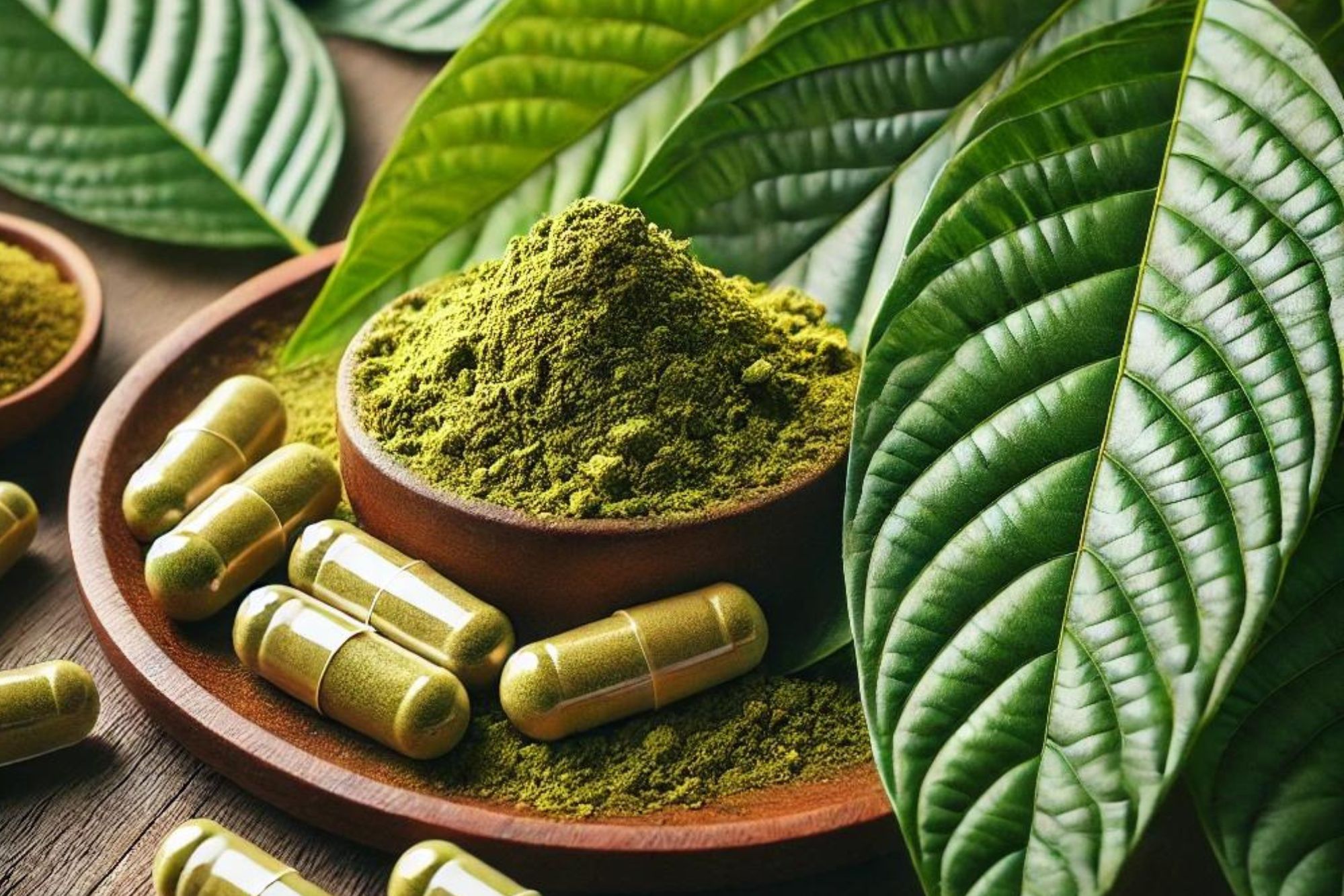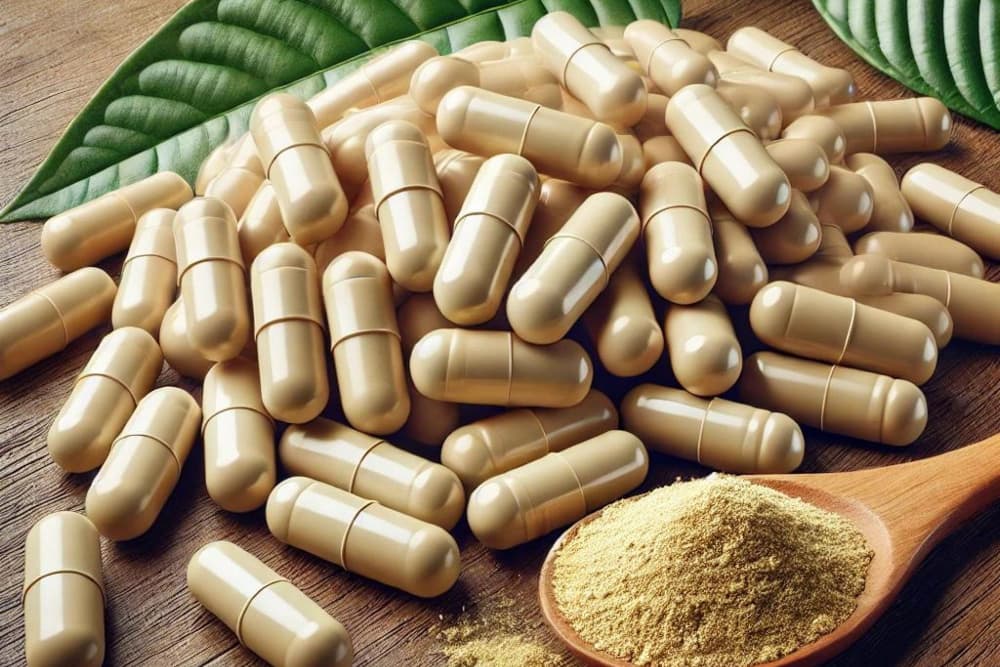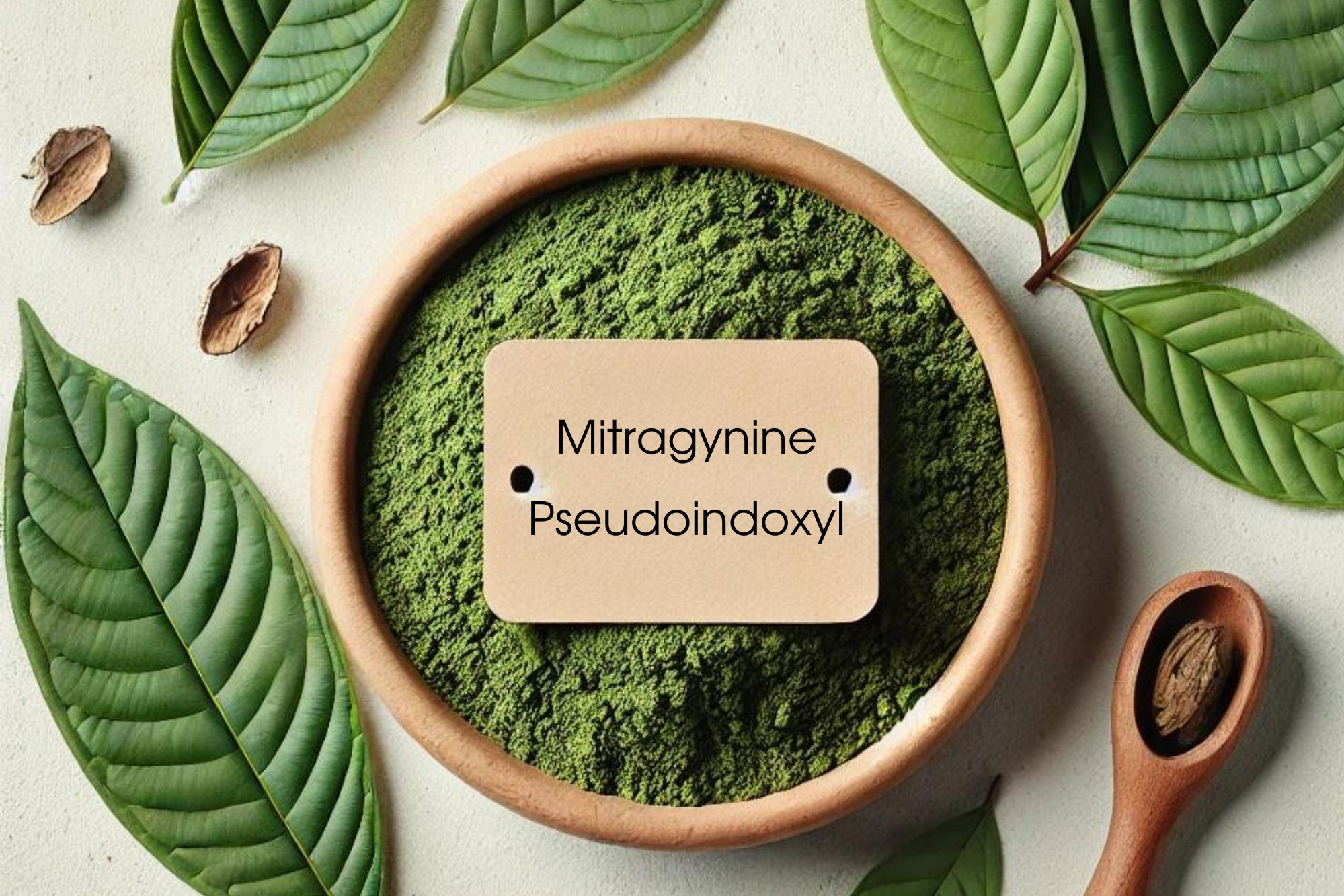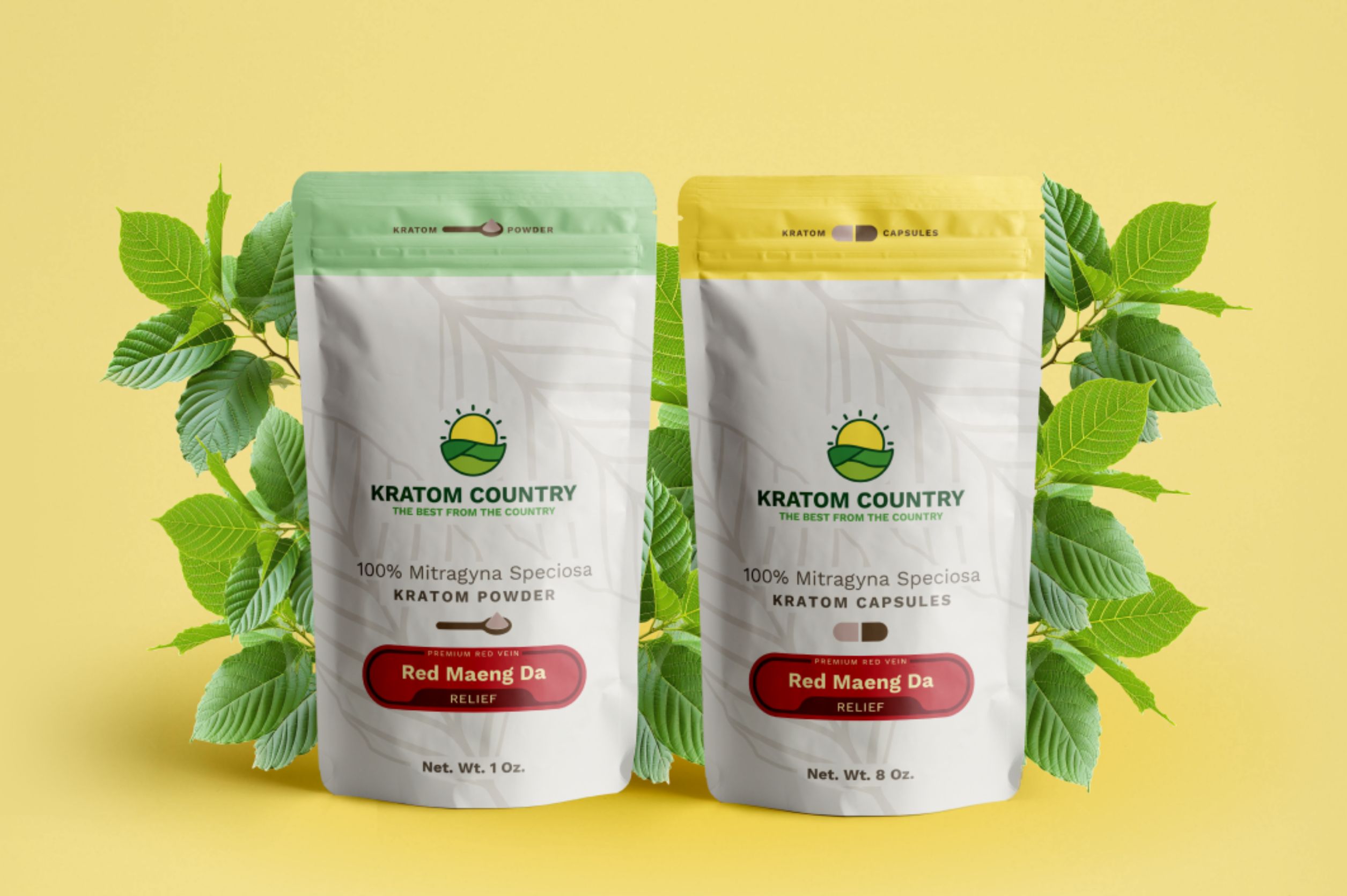Kratom vs. Matcha: Similarities, Differences, and How to Mix Them
Contents
Interested in knowing why kratom vs. matcha is a talking point among enthusiasts? It might be because of their wide range of purported health benefits. Discover their differences, similarities, and how to use them as we discuss key points about these plants.
What is kratom?
Kratom, also known as Mitragyna speciosa, is a tropical evergreen tree from the SE Asian region. It’s been a popular herbal medicine since the 19th century and belongs to the coffee plant family.
The crop is famous for its analgesic and uplifting properties promoting overall well-being. The leaves contain mitragynine and 7-hydroxymitragynine, naturally occurring alkaloids that work like opioids.
Kratom pills and other products deliver stimulating effects that may improve your mood and offer energy. They also promote relaxation and may benefit patients with various mental and physical health issues.
The plant is available in the US as powder or capsules and often mixed into beverages.
Many experience a calming sensation when indulging in either matcha or kratom. Mitragyna speciosa relieves tiredness when consumed in small doses. Ingesting high amounts of this herb may induce euphoria.

What is matcha?
Matcha, also known as “macha” or “maccha,” is a premium-quality ground powder from dried green tea leaves. It comes from the Camellia sinensis plant, which grows primarily in the regions of Japan.

This shrub contains compounds such as polyphenols and caffeine. They’re alkaloids that stimulate the central nervous system.
The plant’s ingredients include L-theanine and theophylline, amino acids that provide long-lasting energy boosts.
Matcha contains soothing properties that may improve focus by relieving discomfort. It’s high in catechin, also called epigallocatechin gallate (EGCG). It’s a cancer-fighting compound acting as an antioxidant in the body.
Mixing the finely grounded powder with water makes a perfect drink for recreational use. It also blends easily with any other liquid suitable for drinking to shake off the afternoon slump and refresh you.
Kratom and matcha similarities
Novices often confuse these herbs, as they’re very similar, even in the wild. Let’s take a closer look at their resembling traits.
The plants look similar
The plants have a matching green physical appearance in their natural environment and thrive in warm, humid, or tropical conditions.
Matcha and kratom grow as leaves on small shrubs and trees, respectively. These crops have a hairy stem culture, and their succulent flowers love sunlight.
The powder forms are identical
Kratom and matcha undergo drying and crushing, which turns them into powder. Although they belong to different botanical families, both products are almost identical in color after processing. They appear bright, despite their differences in particle size and density.
Similar chemistry
These herbs impact the body similarly because alkaloids dominate their chemical composition. The nitrogenous organic compounds deliver cerebral effects in users.
Mitragynine and 7-hydroxymitragynine are very prominent in kratom, while caffeine alkaloids are more active in matcha.
Similar health benefits
Research shows that these herbs deliver motivating effects that induce positivity. They contain soothing and stimulant properties, producing sensations that promote peace.
When looking at kratom vs. matcha, both may energize users and help ignite social interactions. These distinctive effects are the reason they’re suitable for recreational relaxation and treating psychological conditions.
Both consumed in teas
Many consume these two products in tea as they blend seamlessly with liquid. They have a perceived medical value and play an integral part in ceremonial and religious occasions in Southeast Asia.
Users make homemad tea by adding the powder or its raw form to liquid with sweeteners. Similarly, make a matcha drink by brewing the leaves in hot water.
Kratom and matcha differences
Before buying kratom or matcha, it’s best to learn their differences, as the leaves have various uses. Here’s a detailed breakdown of these crops:
|
|
Kratom |
Matcha |
|
Origins |
Mitragyna speciosa tree, Southeast Asia |
Camellia sinensis plant, Japan |
|
Effects and benefits |
Energetic, soothing, and uplifting |
Mood-boost, motivation, and focus |
|
Side effects |
Nausea, constipation, and dizziness |
Diarrhea, heartburn, and insomnia |
|
Usage |
Capsules, tea, powder |
Powder, tea, and baked goods |
|
Legality |
Not federally regulated in the USA |
Legal in the USA |
|
Varieties |
Green Malay, red Maeng Da, and white Vein kratom |
Ceremonial, ingredient, and culinary matcha |
Origins
These plants grow naturally in Asia, but they have different roots. The islands of Malaysia, Thailand, Indonesia, Papua New Guinea, and Myanmar are the origins of kratom trees.
The crops used for matcha are native to two Japanese regions: Nishio and Uji. Zen monk Eisai, a Buddhist priest, introduced these tea leaves to the country in 1191. After planting them in the Kyoto temple garden, he ground the harvested leaves to make a hot drink.
Effects and benefits
Consuming matcha or kratom can improve the overall well-being of users. These plants produce sedating and soothing sensations with therapeutic benefits.

Users report that Mitragyna speciosa powder stimulation is inspiring and boosts enthusiasm levels. Its alkaloids act as neurotransmitters influencing brain functions, leading to contentment. A small dosage might motivate you with the flow of positive ideas.
Kratom purportedly delivers deep physical and mental calming sensations, making it easier to sleep at night. The effects may alleviate mild or severe nervousness and lower fear-related corticosterone levels.
Thanks to matcha’s antioxidants, caffeine, vitamins, minerals, and amino acids, it may improve heart health. It produces energizing sensations without jittery effects.
The caffeine in this green powder boosts metabolism by reportedly stimulating the nervous system, which curbs appetite and aids weight loss.
L-theanine is the compound responsible for the calmness associated with this ceremonial beverage. These ingredients combine to boost cognitive functions, which promote alertness.
Matcha is an excellent supplement for people hoping to improve their concentration for hours. Research revealed that green tea helps lower blood sugar, making it suitable for type 2 diabetes patients.
Side effects
Although matcha and kratom contain analgesic properties that benefit users, they have some side effects. Some rare adverse risks of consuming the Mitragyna speciosa plant include:
- Liver damage
- Constipation
- Changes in urine
- Hallucinations
- Dehydration
- Weight loss
Common side effects of kratom include breathing troubles, dizziness, vomiting, lethargy, and brain fog when indulged in high amounts. A few enthusiasts report cases of psychosis and anorexia, which are detrimental to their health.
Regular users may show aggression, jerky movements, allergic reactions, and muscle aches. Withdrawal symptoms may also involve emotional changes, hot flashes, chills, fever, or insomnia.
Despite matcha’s high concentration of beneficial compounds, possible side effects include:
- Exposure to toxic elements
- Upset stomach
- Diarrhea
- Insomnia
- Anemia
- Heartburn
Nervousness, dizziness, headaches, and constipation are common risks of too much matcha powder or tea. Taking more than recommended could lead to increased blood sugar levels and digestive issues.
Side effects may include an itchy mouth, running nose, hives, swelling, and watery eyes. You may also experience skin irritation, leading to eczema and rashes, which may affect your physical appearance.
Usage
Chewing kratom vs. matcha leaves or making tea with the plants are traditional consumption methods.

You can also use Mitragyna speciosa in powder and capsule forms. Bathing with infused bar soaps or rubbing your body with blended creams and lotions are other forms of usage.
Kratom powder is easy to ingest with non-carbonated beverages and edibles. Many users infuse the herb with lemonade, mango, pineapple, grapefruit, or orange juice before consumption.
The capsules have a gelatin coat and are tasteless, which makes consumption seamless. You can consume one or two with a generous amount of water without fuss.
Matcha is grassy and bitter, often served with milk or sweeteners.
Blending the powder with water to make tea is another efficient method of consuming this herb. It’s also a popular ingredient for baking or making smoothies.
Mix the granules in a bowl with granola or oatmeal for breakfast. You can also add it to soups because it’s safe when consumed in moderation. Incorporate it into a noodle dish, a salad, or even popcorn.
Legality
There’s no federal-level regulation surrounding matcha or kratom usage in the United States, but there are policies in some municipalities.
New Hampshire and Illinois are states where kratom legal status only allows users above 18 to consume it. It’s also available for those above 18 in Oregon and Tennessee.
The plant’s controversial safety status and lack of research are why Denmark and Lithuania regulated its consumption. It also has varying laws in Estonia, Bosnia, and Austria, but is illegal in the United Kingdom, Sweden, France, Canada, and Japan.
Matcha is legal and famous in the United States. Consuming the herb isn’t subject to regulations, but there are laws guiding manufacturers and sellers.
All products must meet the Food and Drug Administration (FDA) industry standards for quality, potency, and nutrient content.
Varieties
Malay, Maeng Da, and Bali are the most common kratom varieties, so understanding their differences improves your knowledge. Let’s have a look at the details:
- Malay: This strain has green, white, yellow, and red vein types that may produce relaxing, sedating, and stimulating sensations. Users report the herb’s effectiveness in improving mood, focus, and energy.
- Maeng Da: This supplement delivers quick and enjoyable effects, leaving you in a positive headspace. Enthusiasts indulge in Maeng Da for balanced physical and mental simulations.
- Bali: Thanks to the strain’s balanced sedating and soothing effects, it might elevate cognitive health. It induces a stress-busting experience that promotes optimism with positive feelings.
Matcha and kratom are different and have various uses. Ceremonial, premium, and culinary grades are the primary green tea types:
- Ceremonial grade: This herb is integral in Buddhist temples during tea ceremonies. It’s the highest quality grade of matcha and best consumed when whisked with hot water.
- Premium grade: This quality matcha is ideal for daily consumption due to its fresh, subtle flavor. It contains all the nutrients and goodness of the ceremonial grade and is perfect for new and seasoned tea drinkers.
- Culinary or cooking grade: The product is suitable as an ingredient for making smoothies or cooking purposes. You can blend it with water, milk, or a sweetener of your choice.
Can you take kratom and matcha together?
Consuming these products together is safe and enjoyable when blended in small doses with water.
Enthusiasts combine these herbs for heightened well-being as it delivers powerful euphoria, intense motivation, and increased social ability.
Avoid mixing these products if you’re highly sensitive to caffeine. It’s best to tinker with varying dosages and methods to balance the stimulating and intoxicating effects.
Measure the matcha and kratom amounts in a bowl, add liquid, and mix them to make a toss and wash. Prepare the unique tea by boiling water and introducing the doses with a sweetener.
Final thoughts on kratom vs. matcha
These plants contain antioxidants that may induce a burst of energy with uplifting sensations. Replacing your morning coffee with a mixture of both products is an excellent idea.
Kratom offers relief from discomfort, while the higher concentration of caffeine in matcha stimulates your mood and brain.
Our products are lab-tested by a third-party for purity and potency, assuring the client of its quality. Buy kratom online and enjoy reliable shipping with excellent support. We also offer a 30-day money-back guarantee.
About the Author

Camila Millson is an experienced technologist of quality kratom products. She has over five years of working experience at Kratom Country.
Camila specializes in making kratom capsule technology. She also has extensive experience in developing technology for kratom tea.
Working for a large company, she is involved in the manufacturing processes of kratom powder, capsules, and other products. As well, she is knowledgeable about kratom legalization and can advise clients on these issues.
Latest Articles
Trending Products
-
 Kava + Kratom Shot
Kava + Kratom ShotEffects : Relief & Comfort, Relaxation, Energy & Euphoria
$12.99
















Comments